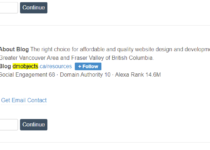Web Design and Development – Responsive Design
Image Credits: Pixabay
The definition of responsive design is simple. It allows web pages to look well on different devices, irrespective of screen size. As technology has changed, mobile devices are being used more to browse the web. Moreover, a variety of screen sizes are available in the market that has caused web design and development problems. Through responsive design, the web page will detect user screen size automatically and adjust itself to fit accordingly.
Most companies today want mobile versions of their websites to increase business. But creating new custom versions to fit each mobile design is impossible and impractical. As a result, web designers cannot keep up with the endless changes in devices. Here is where responsive design comes in.
How to Use Responsive Design?
Responsive design uses images, layouts, grids, and media queries, which enables a website to adjust to changes in screen size. The adjustments include resolution, scripting abilities, and image size. Additionally, it allows users to interchange from portrait mode to landscape without any hiccups.
Examining the Main Elements of Responsive Web Design and Development
- Fluid Grids: These use relative measurements like percentages rather than fixed units like pixels. These give the web page the ability to adjust screen size and width. As a result, the elements on the page will be arranged in a way that looks good.
- Media Queries: They allow websites to get information or data about a device. Moreover, they can help determine the screen size and select the right CSS styles for that particular device.
- Responsive Media: It allows images, videos, and any other type of media file to become flexible. In other words, these content types will change to suit the screen size.
Perks of Responsive Web Design and Development
For businesses, responsive web design Langley has several benefits. These include:
- Increased customer reach and browsing capabilities. Furthermore, these lead to increased sales as well.
- Ensuring consistent user experience at all times.
- With one website that adjusts to every device, companies don’t need multiple versions that need maintenance.
- Companies that use responsive design are ahead of their competition. As a result, their customers can browse their products from any device.
There are benefits for the users too:
- They no longer have to zoom in to read content on their phones.
- There is no more horizontal scrolling because the content isn’t too big for the screen.
- Links are easy to click on, and the same goes for buttons or tabs on websites.
- Web pages load quickly.
Responsive web design and development has changed the face of how we use the web; it continues to grow and change even today.


